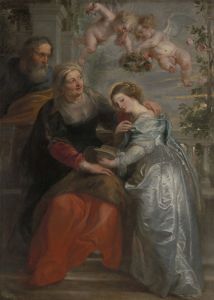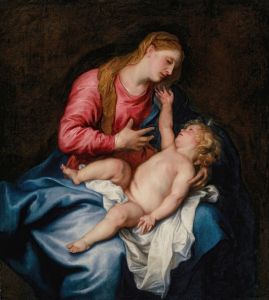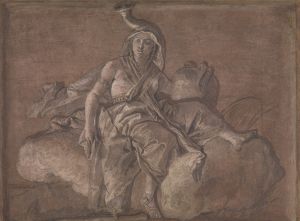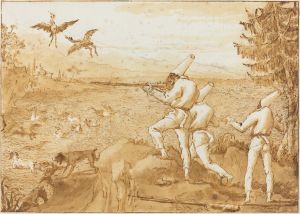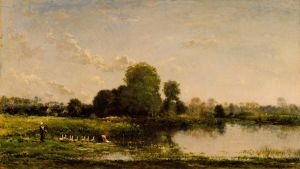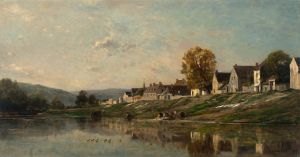
The Holy Family Arriving at the Bank of the River
A hand-painted replica of Giovanni Domenico Tiepolo’s masterpiece The Holy Family Arriving at the Bank of the River, meticulously crafted by professional artists to capture the true essence of the original. Each piece is created with museum-quality canvas and rare mineral pigments, carefully painted by experienced artists with delicate brushstrokes and rich, layered colors to perfectly recreate the texture of the original artwork. Unlike machine-printed reproductions, this hand-painted version brings the painting to life, infused with the artist’s emotions and skill in every stroke. Whether for personal collection or home decoration, it instantly elevates the artistic atmosphere of any space.
Giovanni Domenico Tiepolo, an Italian painter and printmaker, was a prominent figure in the 18th-century Venetian art scene. He was the son of the renowned painter Giovanni Battista Tiepolo and followed in his father's footsteps, developing a distinctive style that combined elements of the Rococo and Neoclassical movements. One of his notable works is "The Holy Family Arriving at the Bank of the River," which exemplifies his skill in composition and narrative.
"The Holy Family Arriving at the Bank of the River" is a painting that depicts a serene and intimate moment in the life of the Holy Family—Mary, Joseph, and the infant Jesus. The scene captures the family as they pause by a riverbank, a setting that suggests a moment of rest during a journey. This theme of travel and rest is common in religious art, often symbolizing the Holy Family's flight into Egypt, although the specific narrative context of this painting is not explicitly detailed.
Domenico Tiepolo's work is characterized by its delicate use of color and light, and this painting is no exception. The composition is carefully balanced, with the figures of Mary and Joseph positioned to draw the viewer's eye towards the central figure of the infant Jesus. The use of light in the painting highlights the tenderness of the scene, with soft, natural tones that create a sense of warmth and tranquility.
The painting reflects Domenico's ability to convey emotion and narrative through subtle gestures and expressions. Mary's gentle gaze towards her child and Joseph's protective stance are rendered with a sensitivity that invites the viewer to contemplate the familial bond and the divine nature of the infant Jesus. The landscape, though secondary to the figures, is rendered with equal care, providing a harmonious backdrop that enhances the overall composition.
Domenico Tiepolo's work often included religious themes, and he was known for his ability to infuse these scenes with a sense of humanity and accessibility. His paintings were not only devotional but also served as reflections on the human experience, capturing moments of everyday life with grace and insight. "The Holy Family Arriving at the Bank of the River" is a testament to his skill in blending the sacred with the familiar, creating a work that resonates on both spiritual and personal levels.
This painting, like many of Domenico's works, demonstrates his mastery of the fresco technique, a skill he inherited and refined from his father. His ability to work on both large-scale frescoes and smaller canvases allowed him to adapt his style to various formats, making his art widely appreciated in both public and private settings.
In summary, "The Holy Family Arriving at the Bank of the River" by Giovanni Domenico Tiepolo is a fine example of 18th-century Venetian painting. It showcases the artist's talent for composition, his delicate use of color and light, and his ability to convey deep emotion through religious narrative. The painting remains a significant piece within Tiepolo's oeuvre, reflecting his contribution to the art of his time and his enduring legacy in the history of art.





